
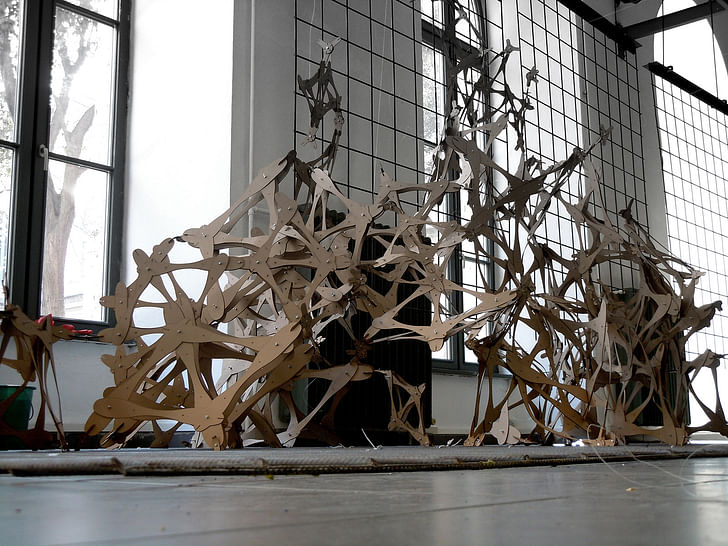
by Elif Erdine (AA Istanbul Visiting School Program Director) and Alexandros Kallegias (AA Athens Visiting School Program Director)
AA Athens | Istanbul Visiting School (AI) defines architecture as "an art of suppositioning ideas, architectural principles which are being performed repeatedly". Its foundations lie on combining theory and practice and shared knowledge, with the goal to go beyond individuality and address today’s challenges via dialogue.
In a period of 20 days, AI brings together people of different levels of architectural experience – from 2nd-year students to PhD candidates from various places of the globe. Every workshop runs as a highly-focused unit-based educational system with shared agendas which promotes collaborative design, research and performance. They are run by a tutoring team of full-time professionals who have experience working in internationally renowned architectural firms.
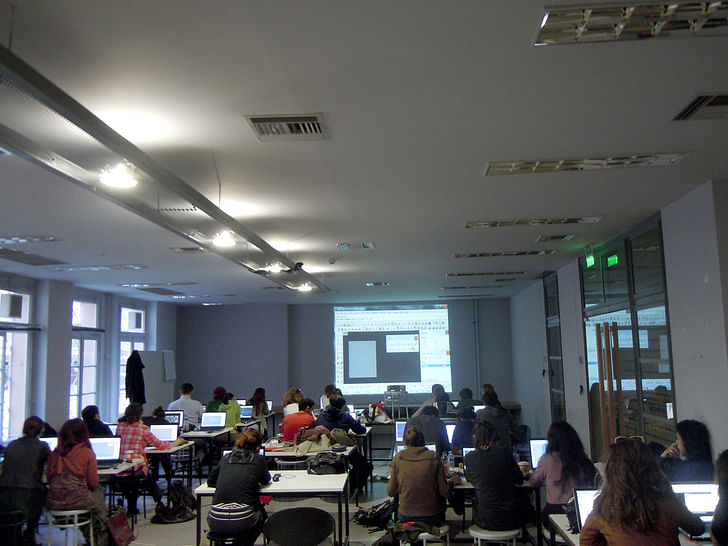
Among other challenges, both the AI participants and the tutors faced the challenge of short-timed project proposal using computational tools as well as with the use of digital fabrication machines in a fully contextualized architectural problematic. The objective is to achieve interesting design solutions through the use of the latest technological developments, and in its consecutive year, this was accomplished in a very successful way. The final results were presented not as merely attractive images on the screen but as digital prototypes filled with elaborate information that made the digital fabrication possible.
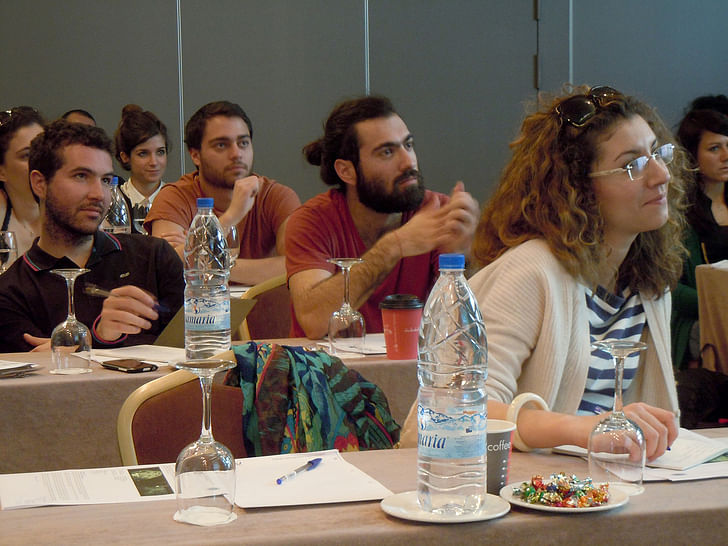
AA Athens | Istanbul Visiting School has intensified its activities on the learning experience; the responsibility of being productive and capable to complete a project in a short period of time is shared both by students and tutors. The knowledge of every individual gets acknowledged and synthesized into a wider and collective creative force.
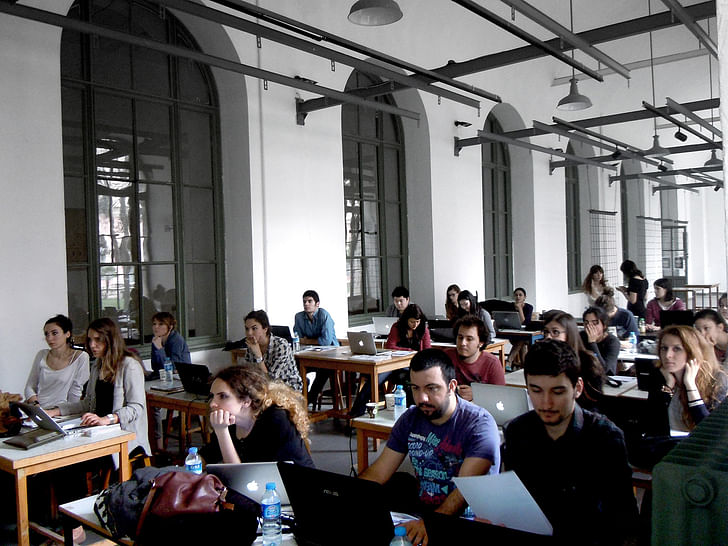
Furthermore, the collaboration among different educational institutions provided with the tutors from Athens, Istanbul and London with the benefit to expand their teaching abilities and become more knowledgeable in working with international targeted groups. In addition, the actual travel from one location to another contributed to the entire experience. Especially in the case of the students, it was very effective as a training practice as they became more aware of the design potentials of AI fundamental concepts and methods while observing the systematic approach applied in two different places of two different worlds.
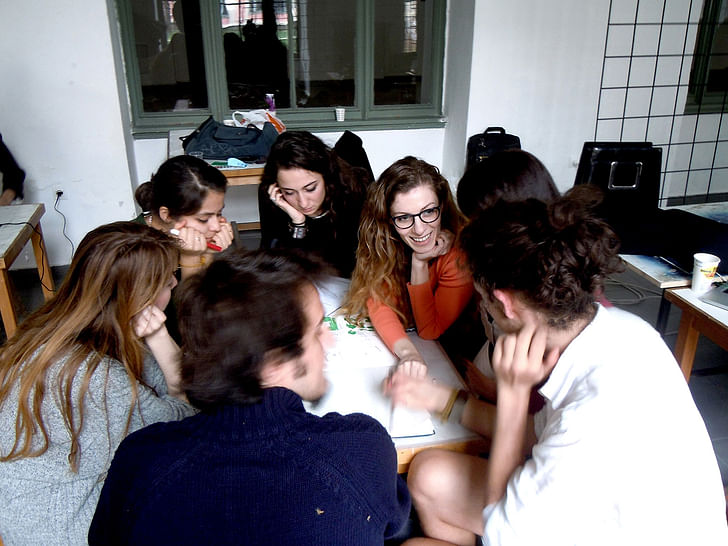
The AA Athens | Istanbul Visiting School is strong in exposing their participants to a systematic and carefully designed formula that included software tutorials, toolkits, and lectures from internationally known professionals as well as hands-on experience with the physical model making process in small and large architectural scale.
This year’s series concluded with a wonderful set of physical models at large scale which is expressive of a method that involves innovation and combinatory thinking. This agenda has and will continue to be a driving force behind the architectural prototypes which AA Athens | Istanbul Visiting School pursues to develop on ever-more larger scales.
AA Athens 2013 (March 25 - April 2, 2013)
Student Work
Amorphic
Myrto Barbaris, John Kanakas, Vassilis Ioannidids, Solonas Predaris, Maryam Altaf, George Berdos, George Lavantsidis, Christina Nan, Sibelle Urben, Canay Kara
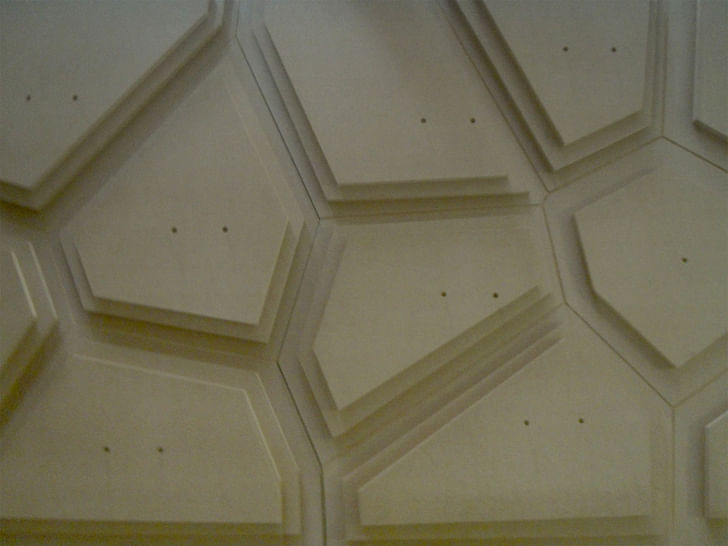
Aspired to convert the low height scenery of the city to an environment with higher and more vertical characteristics, the Amorphic team developed an interactive prototype of moving voronoi cells. Connected by flexible muscle-type material, three intermingled sets of cells are driven by their voronoi vertices (nodes) to expand and contract on the horizontal axis. The materiality behind this project is enabling the model to dynamically transform from a planar surface to a more 3-dimensional geometry which reacts to the sound of the environment.
Horror Vacui
Ioli Zanitsanou, Christina Voutou, Ioanna Rammou, Nelly Spanou, Maria Papadopoulou, Dafni Lasithiotaki, Alexandros Fotiadis, Iason Giraud, Danai Ioannidi
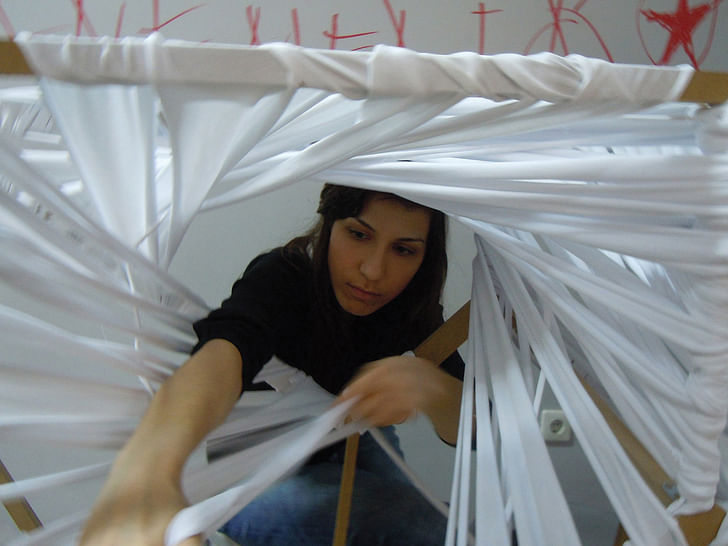
Redefining the concept of the architectural wall, team Horror Vacui constructed a life-like large-scale archetype which bears the behavior signature of that of primal breathing organisms. This interactive partitioning system has the ability to detect movements which acts as the external stimuli that accelerates the breathing action of the textile surface.

As more and more people approach the structure, it becomes aware of their presence and reacts by stretching and loosening its flexible apertures resulting in an vivid system of changeable outlines.
Urban interactions
Sofia Kasapantoniou, Roubini Hadjicosti, Nora Demjaha, Erato Choli, Vagia Pantou,Danae Tsakoumaki, Anthony Thodis, Natalia Vitzileou, Oleg Raspopov

The creative construction techniques using low-tech materials combined with the intelligent use of the Arduino electronic microcontrollers gave rise to the human-scale interactive dome made by Urban Interactions.

The prototype is put in action every time one passes through it by deforming its pliable interwoven surface stripes. The smooth movements of the stripes are followed by the triggering of different sounds that act as a additional layer of the dome experience.

AA Istanbul 2013 (April 4-12, 2013)
Student Work
Ground Fusion
Lida Marinkova, Maryam Altaf, Sibel Yasemin Özgan, Özgün Balaban, Tolga Karasay, Işık Gören, Canay Kara, Zekiye Nil Karamolla
The central station of Istanbul Underground network is located at the heart of Taksim Square, creating vast flows of pedestrian movement in the area. Additionally, the lack of distinction between car and pedestrian networks restrains any means of well-managed flow of pedestrians throughout the immediate surroundings.
Ground Fusion aims to provide a connection between the underground and the above ground, a fusion that enables natural sunlight to go through and renders the whole area a lighter and more enjoyable place to be.
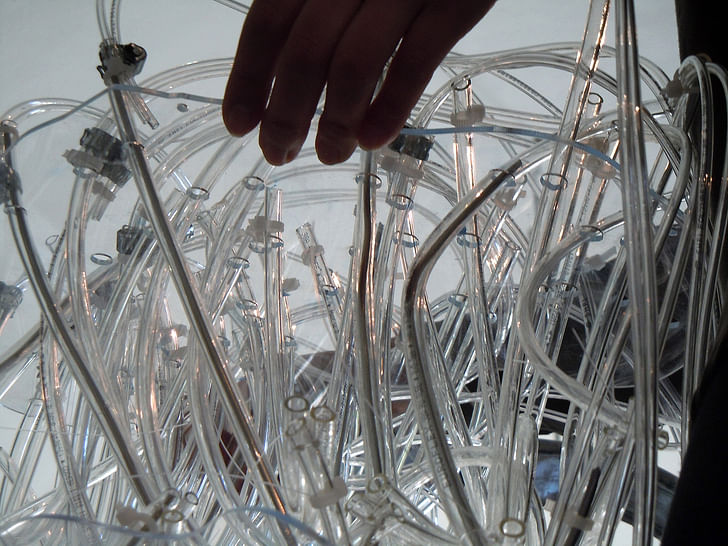
As such, the main design parameters become the lighting levels according to the varying position of the sun during the year, as well as the prominent wind directions which can be manipulated in order to generate air flow in the underground station. Ground Fusion proposes a woven structural system which can incorporate varying intensities of spatial porosities in order to regulate light and air flow distribution. The computational setup is created on an agent-based branching system which can serve as a structural system in addition to becoming a differentiated porous network. The final prototype makes use of PVC tubes of varying diameters and thickness values to test the stability of the branching network, connected with different types of joints.
Naked AKM
Zeynep Sahin, Sibelle Urben, Cagla Gurbay, Didem Sahin, Mutlu Gungor, Fikret Can Kusadali, Merve Guzel
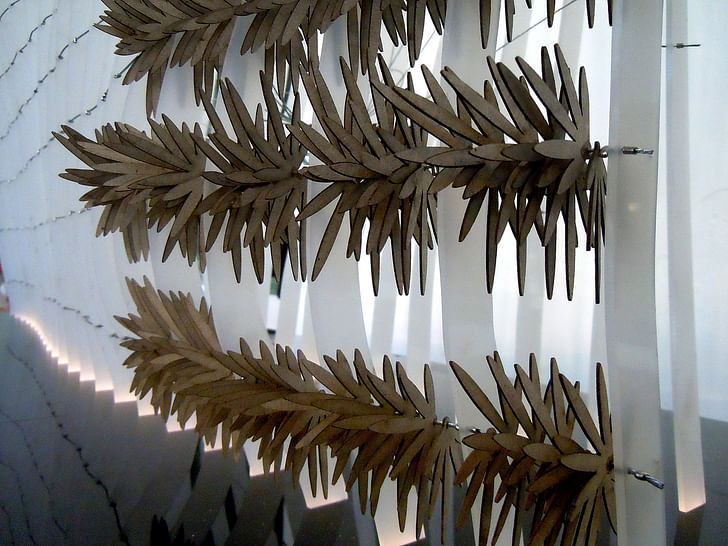
Ataturk Cultural Center (AKM) is a multi-purpose cultural center and opera house located on Taksim Square. Even though it comprises a glazed curtain wall facade, it has been observed that the public passing from Taksim Square is not well informed about the artistic events taking place inside AKM. Naked AKM proposes to design a secondary facade in front of the existing one which can perform as an interface between AKM and its surroundings in multiple levels.

The major design parameter is the frequency of events taking place at AKM, changing usually on a monthly basis. The daily variations in the density of people passing by Taksim Square act as a secondary-level parameter. These time-dependent inputs are reflected on the proposed facade through the design of its structure and its elements. The linear facade structural elements are controlled according to the monthly event change through global formal variations. On a local scale, the daily changes depending on pedestrian density alter the alignment of the facade elements, which are designed to have 180 degrees rotation around their horizontal axis. The final prototypes of Naked AKM display the overall morphological approach as well as the building logic of the facade elements.
Noise De-Former
Ezgi Bastug, Yin Hui Chung, Deniz Gezer, Augus

Different parts of Taksim Square can be distinguished from one another according to their distinctive noise levels. While some areas, such as Gezi Park, is relatively quiet throughout the day, the Monument and its surrounding area is particularly loud. Noise De-Former aims to materialize the fluctuating noise levels in Taksim Square by creating an interface which can regulate noise, enabling a more comfortable environment for the public resting in Gezi Park.
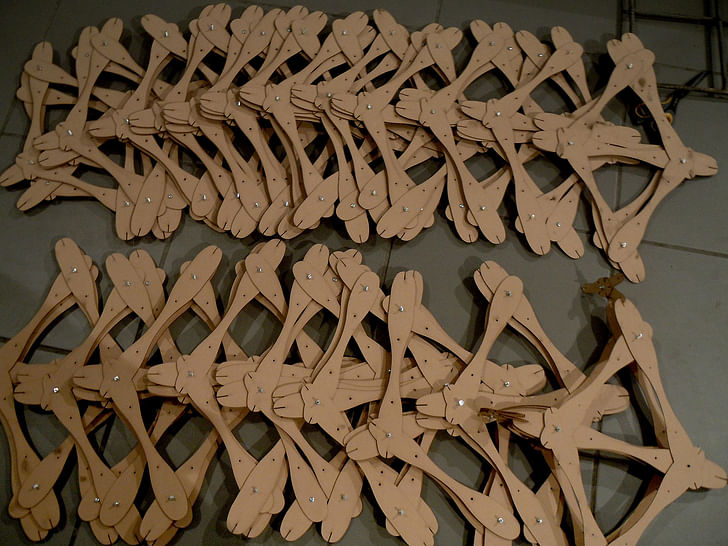
In this respect, noise maps have been generated as an analysis method in order to define how noise is varied throughout the day and during specific events, such as concerts, gatherings, and celebrations. The resulting data from noise maps are used to distribute a component based system in Gezi Park in order to keep the noise levels at a minimum in this area. This bottom-up approach enables the adaptability of the system on a local component and overall global scale. The component, made of wood, has the capacity to expand vertically and horizontally due to the distribution of flexible and fixed connections at specific points. The noise data, which is initially a two-dimensional gradient color map, is constructed into a three dimensional framework by interpreting color values as neighboring rules. The noise components follow the paths of this framework, leading to the formation of the final proposal.
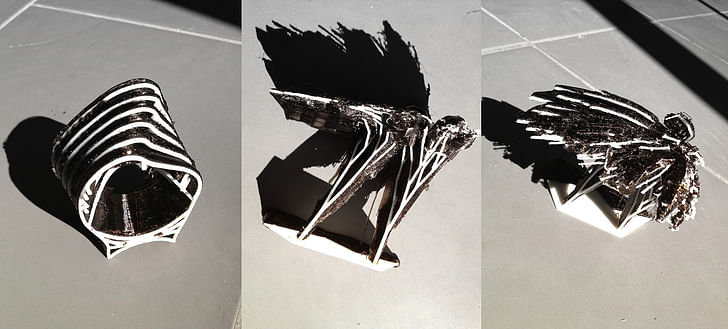
For more information on past and future workshops, please visit: http://ai.aaschool.ac.uk
Elif Erdine is a PhD in Architectural Design Candidate at the AA, researching on ‘Generative Processes in Tower Design: Algorithms for the Integration of Tower Subsystems’, under the advisory of George Jeronimidis, Patrik Schumacher, and Mike Weinstock. She has been working at Zaha ...
No Comments
Block this user
Are you sure you want to block this user and hide all related comments throughout the site?
Archinect
This is your first comment on Archinect. Your comment will be visible once approved.